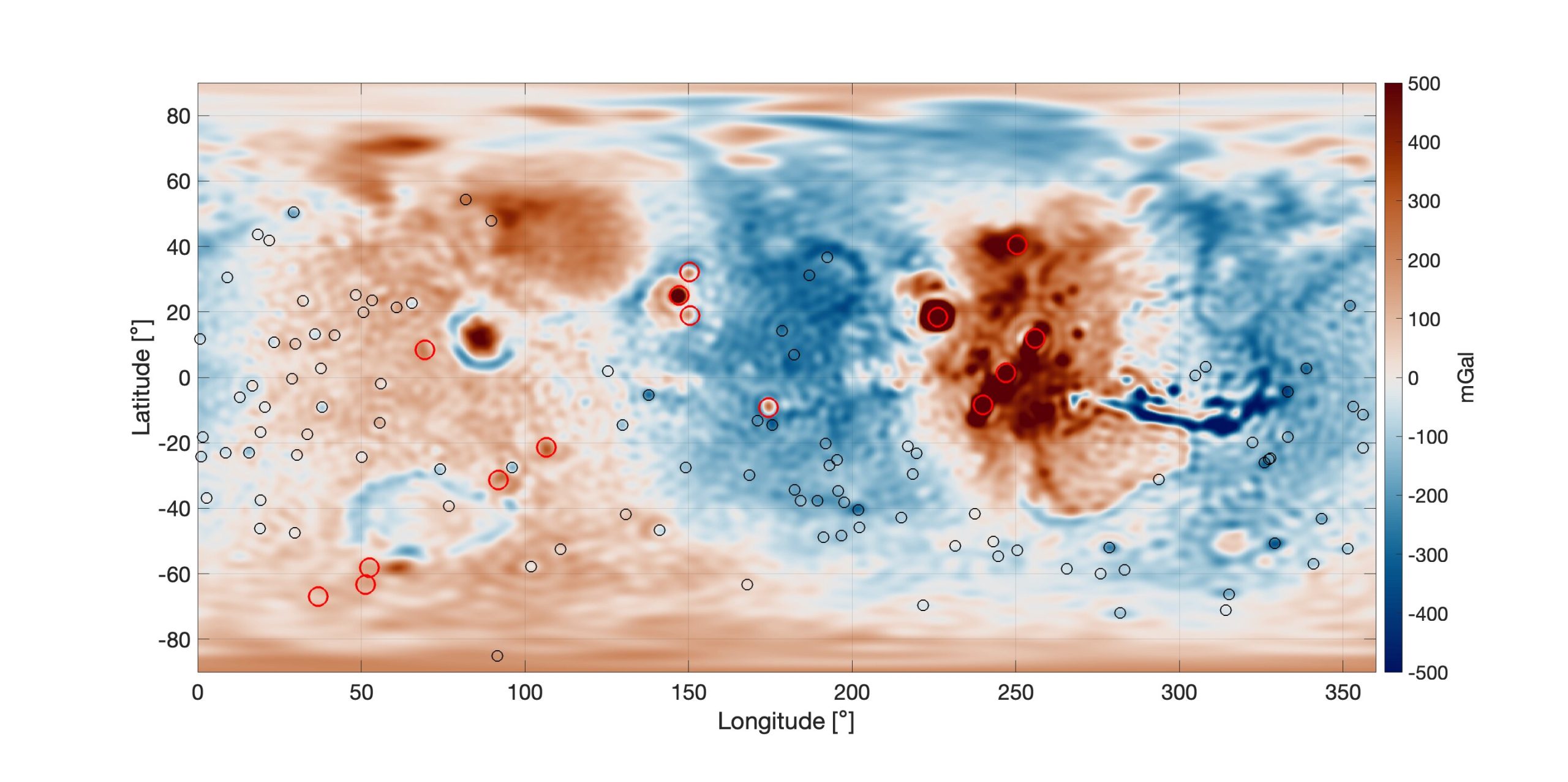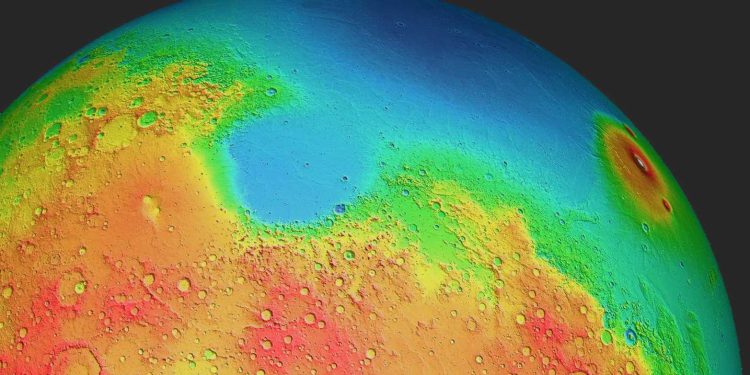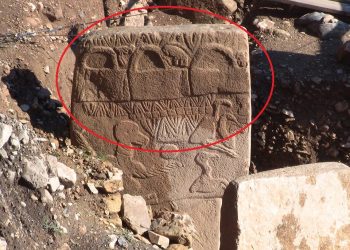Researchers analyzing gravity data from Mars have uncovered massive, dense structures concealed beneath layers of sediment in what was once a vast Martian ocean. The study also hints at ongoing volcanic activity that could be lifting Olympus Mons, the largest volcano in the solar system, even higher. These groundbreaking findings were presented at the Europlanet Science Congress (EPSC) in Berlin by Dr. Bart Root from Delft University of Technology (TU Delft), highlighting new discoveries in Mars’ complex geological history.
Hidden Structures Beneath Mars’ Lost Oceans
Mars is home to many mysteries, and the northern polar plains are no exception. Beneath a smooth layer of sediment—believed to have been deposited on the ancient seabed—lie dense, hidden features. While scientists have long known about underground ice deposits, as explained by Kozmos, these newly discovered formations are unlike anything seen before. According to Dr. Root, “There are about 20 features scattered around the northern polar cap, one even resembling the shape of a dog.”
The exact origin of these formations remains unclear, but they could either be volcanic or compacted material resulting from ancient impacts. Using gravity data gathered from multiple space missions, Dr. Root’s team has provided a rare glimpse into Mars’ older geological history, with implications for the planet’s internal processes.

Olympus Mons: A Volcano on the Rise?
Beyond the hidden structures, the study delves into the volcanic region of Tharsis Rise, home to the colossal Olympus Mons. While volcanoes like Olympus Mons are naturally dense, the surrounding area has been found to have unusually low gravity. This anomaly puzzled researchers, as it couldn’t be explained solely by the Martian crust and upper mantle.
Dr. Root and his team have proposed that a vast, light mass approximately 1,750 kilometers wide, located deep within the Martian interior, may be causing the Tharsis region to rise. This mass could represent a massive plume of magma pushing upward, indicating that Mars might still be geologically active.
This finding challenges previous assumptions about Mars’ volcanic history. Dr. Root emphasized that the NASA InSight mission has provided crucial data about the planet’s outer crust, requiring scientists to rethink how Olympus Mons is supported. If active magma movements are indeed occurring, Mars may still have the potential for surface volcanic features to form.
Future Missions: Mapping Mars’ Hidden Depths
The next frontier in Martian exploration could be the proposed Martian Quantum Gravity (MaQuIs) mission. This mission aims to use advanced gravity-mapping technologies to delve deeper into Mars’ geological mysteries, much like the GRACE mission on Earth. By mapping Mars’ gravity field in detail, scientists hope to uncover more about the planet’s hidden features and dynamic interior processes, including seasonal atmospheric changes and subsurface water reservoirs.
Dr. Lisa Wörner, a key member of the MaQuIs mission team, presented the mission’s goals at EPSC2024, stating, “This technology will enable us to study Mars’ subsurface and ongoing mantle convection with greater precision. It’s a game-changer for understanding the planet’s active geology.”
Mars’ enigmatic past is slowly being unveiled, and with missions like MaQuIs on the horizon, humanity could soon unlock even deeper secrets about the Red Planet.











